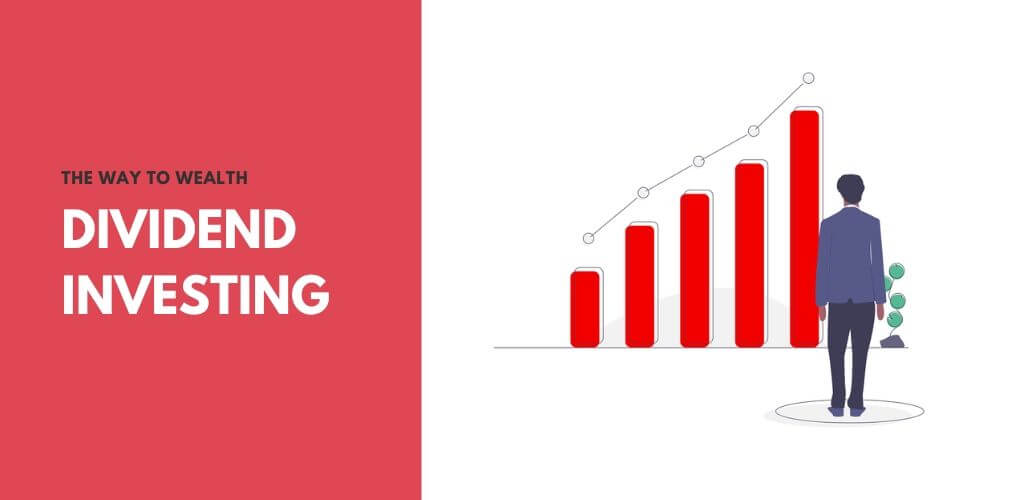Dividend Investing: The Ultimate Guide to Dividends and Dividend Investing

The idea of collecting checks for the rest of your life and generating passive income can be very exciting. If this sounds like something that might interest you, then we’ve got some great information on dividends in here!
Dividends have been shown time after time as a low-risk way to boost investment returns without taking any risks with capital; it’s also easier than most people think because there aren’t many rules or regulations surrounding them (which means opportunities%). This Guide will teach all about what they are-where investors should shop.
A step-by-step guide to understanding dividends
Dividends are payments made by a company to its shareholders. They are usually paid out quarterly, and the amount of the dividend is determined by the board of directors based on the company’s profitability.
Dividends can be either cash or shares of stock, and they are typically paid to common shareholders, though preferred shareholders may also receive dividends.
When a company pays out dividends, the total amount of the dividend is first deducted from the company’s retained earnings.
What is a dividend investment?
A dividend investment refers to an investment in a company that pays regular dividends. These types of investments can be made in either stocks or mutual funds.
Dividend stocks are stocks of companies that have a history of paying out dividends, and they typically pay higher dividends than the average stock.
Dividend mutual funds are mutual funds that invest in a portfolio of dividend-paying stocks. These types of funds can offer investors a way to diversify their portfolios and receive regular income from dividends.
Don’t just buy the highest dividend stocks
Just because a company pays high dividends doesn’t mean that it’s a good investment. A company’s dividend yield is the amount of its annual dividend divided by its stock price.
For example, if a company has a stock price of $100 and pays out an annual dividend of $5, then its dividend yield would be 5%.
However, a company’s dividend yield can also be affected by its stock price. If the company’s stock price goes down, then its dividend yield will go up.
For example, if a company’s stock price falls from $100 to $50, and it continues to pay out the same $5 dividend, then its dividend yield will now be 10%.
When considering a dividend stock, you should look at the company’s dividend history, its financial stability, and its valuation.
Why don’t all stocks pay dividends?
Not all companies pay dividends, and there are a few reasons for this.
Some companies may reinvest their profits back into the business in order to grow. Other companies may use their profits to pay down debt. And some companies may simply not be profitable enough to pay out dividends.
If a stock does not pay dividends, how can it be valued?
A stock that does not pay dividends can still be valued based on its price-to-earnings ratio (P/E ratio).
The P/E ratio is a measure of how much investors are willing to pay for $1 of a company’s earnings.
For example, if a company has a P/E ratio of 10, it means that investors are willing to pay $10 for $1 of the company’s earnings.
A company’s P/E ratio can be affected by a number of factors, including its growth prospects, its profitability, and its dividend history.
Cash Dividends vs. Share Repurchases
When a company pays out cash dividends, the shareholder receives the dividend in the form of cash.
For example, if you own 100 shares of a company that pays a $1 per share dividend, you would receive $100 in cash.
With share repurchases, the company buys back its own shares from shareholders.
For example, if a company has 100 shares outstanding and buys back 10 of them, then it would have 90 shares outstanding.
How Dividend Tax Works and Dividend Tax Rates
The tax on dividends is typically lower than the tax on other types of income, such as interest or capital gains.
This is because dividends are considered to be a return of capital, rather than income.
The tax rate on dividends depends on the type of dividend and the investor’s tax bracket.
For example, qualified dividends, which are dividends that meet certain criteria set by the IRS, are taxed at a lower rate than non-qualified dividends.
Dividend trap and how to avoid it
A dividend trap is a stock that pays high dividends but has little chance of increasing in value.
Dividend traps can be caused by a number of factors, including a decline in the company’s earnings, an increase in the company’s debt, or poor management.
To avoid dividend traps, investors should research companies before investing and pay attention to dividend yield and dividend payout ratio.
Dividend stocks perform better than stocks with no dividends
Dividend stocks have outperformed the market over the long term.
Between 1928 and 2018, dividend stocks have returned an average of 10.4% per year, while the market has returned an average of 9.2% per year.
Dividend stocks have also outperformed the market in periods of market turmoil.
For example, during the 2008 financial crisis, dividend stocks lost an average of 37%, while the market lost an average of 55%.
Use dividends to recover from large losses
If you suffer a large loss in the stock market, you can use dividends to help you recover.
Dividends can provide a source of income that can help you cover your living expenses and reinvest in the market when it has recovered.
Dividend stocks tend to decline less during market crashes
Dividend stocks tend to lose less value during market crashes than non-dividend stocks.
This is because dividend stocks are typically more stable and cash flow positive than non-dividend stocks.
Using Dividend Yields to say that a stock is undervalued or overvalued
The dividend yield is the ratio of a company’s annual dividend to its stock price.
For example, if a company pays a $1 per share dividend and its stock price is $10, its dividend yield would be 10%.
Dividend yields can be used to say whether a stock is undervalued or overvalued.
A high dividend yield may indicate that a stock is undervalued, while a low dividend yield may indicate that a stock is overvalued.
However, it is important to note that dividend yields are just one factor to consider when valuing a stock. The dividend payout ratio is also an important factor to consider.
How the Media Misleads Investors on the role of dividends
The media often portrays dividends as a safe and easy way to make money in the stock market.
However, this is not always the case. Dividends are only one factor to consider when investing in stocks. Investors should also consider a company’s growth prospects, profitability, and valuation before investing.
Dividends are not a guaranteed return on investment, and a company’s stock price can decline even if it pays high dividends.
Investors should be cautious of companies that rely too heavily on dividends, as they may be at risk of cutting or eliminating their dividends in the future.
Your Step-by-Step Guide to Incorporating an Investment Portfolio
If you’ve ever wanted to live off your money, there are a lot of advantages to doing so. This ten-page, step-by-step tutorial has plenty of advice on how to construct a collection of assets that will generate enough income for you to live on the interest and profits alone rather than having to sell your job in order to receive paid. Learn about investing if you want to pursue your goal.
Javier Niskanen is a crypto investor who is passionate about helping others achieve success. He has a background in computer science and has been involved in the crypto world since early 2017. Javier is excited to see how blockchain technology will change the world for the better.









